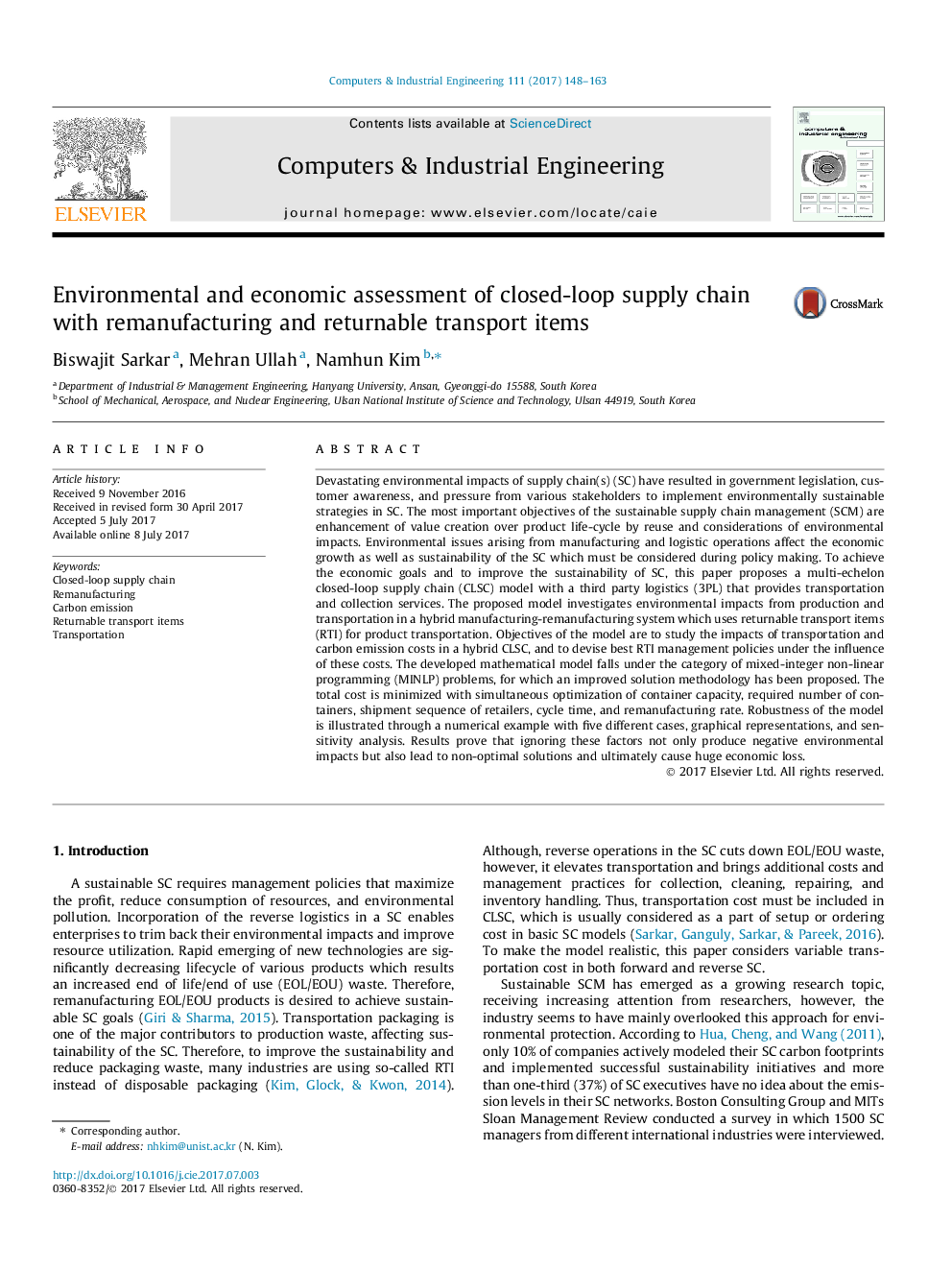| Article ID | Journal | Published Year | Pages | File Type |
|---|---|---|---|---|
| 5127601 | Computers & Industrial Engineering | 2017 | 16 Pages |
â¢Environmental impacts of closed loop supply chain are studied.â¢A hybrid model and reusable containers are considered.â¢Ignoring transportation and emission costs results to obtain false optimal values.â¢Hybrid policy is the optimal one while pure remanufacturing is the expensive one.â¢Optimal policies for container management are decided.
Devastating environmental impacts of supply chain(s) (SC) have resulted in government legislation, customer awareness, and pressure from various stakeholders to implement environmentally sustainable strategies in SC. The most important objectives of the sustainable supply chain management (SCM) are enhancement of value creation over product life-cycle by reuse and considerations of environmental impacts. Environmental issues arising from manufacturing and logistic operations affect the economic growth as well as sustainability of the SC which must be considered during policy making. To achieve the economic goals and to improve the sustainability of SC, this paper proposes a multi-echelon closed-loop supply chain (CLSC) model with a third party logistics (3PL) that provides transportation and collection services. The proposed model investigates environmental impacts from production and transportation in a hybrid manufacturing-remanufacturing system which uses returnable transport items (RTI) for product transportation. Objectives of the model are to study the impacts of transportation and carbon emission costs in a hybrid CLSC, and to devise best RTI management policies under the influence of these costs. The developed mathematical model falls under the category of mixed-integer non-linear programming (MINLP) problems, for which an improved solution methodology has been proposed. The total cost is minimized with simultaneous optimization of container capacity, required number of containers, shipment sequence of retailers, cycle time, and remanufacturing rate. Robustness of the model is illustrated through a numerical example with five different cases, graphical representations, and sensitivity analysis. Results prove that ignoring these factors not only produce negative environmental impacts but also lead to non-optimal solutions and ultimately cause huge economic loss.
